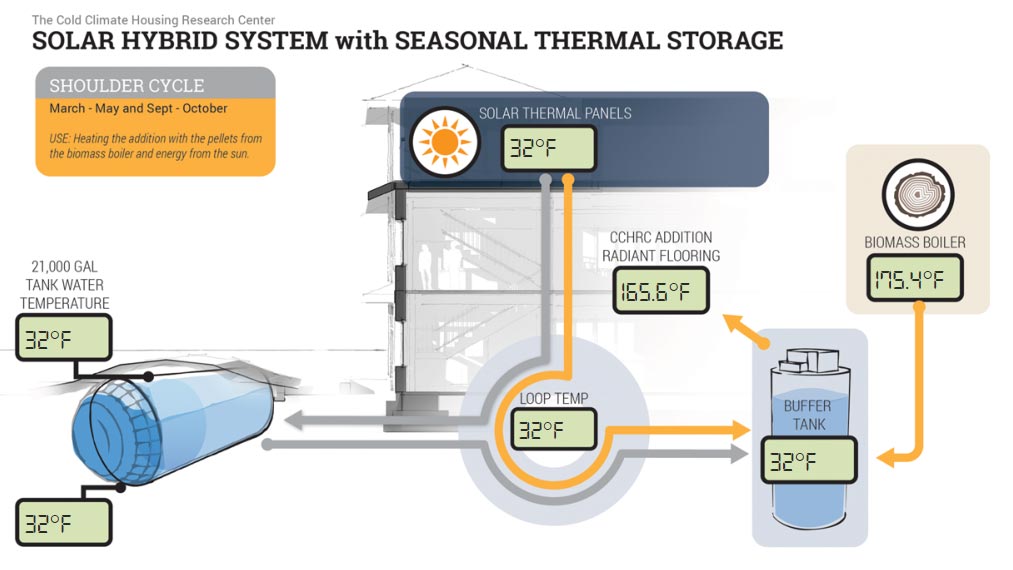Thermal Storage Technology Assessment
This technology assessment was sparked by a strong interest in using thermal storage to supplement home heating systems. Thermal storage can take many forms: water storage tanks that allow residents to burn wood more efficiently; a storage tank for an electric heating system to enable off-peak power use; storing heat gathered from solar panels in the ground during the summer for a heat pump to extract in the winter; and many others.
Space heating accounts for three-quarters of energy consumption in single-family residences in Alaska (ARIS, 2012). One way to lower costs is to use thermal storage in conjunction with heating systems to raise the efficiency of the system. New techniques are increasingly being tested and applied in Alaska and other cold climates. A recent home in Fairbanks, for example, uses solar thermal panels and a masonry heater to charge a 5,000-gallon thermal storage tank that provides heat to a radiant floor for space heating. The thermal storage tank also provides heat for the domestic hot water system.
In spite of its potential, there is little information on thermal storage in cold climates and how it can be integrated into heating systems. This report provides an introductory assessment of the state of thermal storage in residential construction to provide researchers and building owners with ideas for various applications. It can also be used to inform future research on thermal storage in cold climates.
CCHRC Thermal Storage Demonstration
This thermal storage system uses a massive tank of water to store energy from the sun. Alaska receives abundant sunlight during the summer but very little during winter months, when heating loads are greatest. Thermal storage allows us to capture heat with solar collectors in the summer and tap into it during the heating season.
In 2013, we installed 16 solar thermal collectors on the south roof of the building and buried a 25,000 gallon water tank in the ground. The solar collectors transfer heat into the tank in the summer through a heat exchanger, and the building draws from this heat in the winter. The system can produce 50 million BTUs a year, or the equivalent of 400 gallons of heating oil. This demonstration provides clues about how to design a residential thermal storage system and the potential costs and savings for homeowners.
This experimental solar seasonal storage project was funded by a $70,000 grant from BP Alaska, which includes solar hot water collectors and a heat storage system to enable solar energy to be stored and used during the winter. The tank was donated by K&K Recycling.











